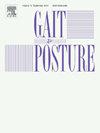Are challenging walking environments linked to falls or risk of falling in children with cerebral palsy? A systematic review
IF 2.2
3区 医学
Q3 NEUROSCIENCES
引用次数: 0
Abstract
Background
Children with cerebral palsy (CP) regularly fall over and this has negative effects on their physical and psychosocial wellbeing (e.g., reduced activity participation). However, the reasons for falls are not well understood. The way in which children negotiate challenging walking environments (e.g., uneven surfaces), may reveal more about how falls occur as these environments require gait modifications to maintain stability. Stability in challenging walking environments has been explored for children with CP; however, it remains unclear how these lead to falls.
Research question
Do challenging walking environments that mimic those faced in the real-world, contribute to increased fall occurrence and fall risk in children with CP?
Methods
Five databases were searched, and 1386 records screened to include ambulatory children with CP, aged 5–18 years old, investigating dynamic walking in challenging environments, with outcomes of fall occurrence or fall risk. The full protocol for this review was registered on PROSPERO (CRD42021290456).
Results
Sixteen studies met the inclusion criteria. One study reported occurrence of stumbles, two reported no falls. Fifteen studies identified gait alterations used by children with CP in challenging environments. Twenty-four gait characteristics were identified to be indicative of cautious walking strategies and seven gait characteristics identified to increase fall risk, suggesting a potential link. However, limited evidence exists as to whether this reflects falls faced in the real-world.
Significance
Investigations into stability over challenging walking environments for children with CP are lacking any measures of fall occurrence. Investigations into the mechanisms that may contribute to high fall risk, or fall avoidance when negotiating obstacles, uneven surfaces, steep declines and stairs may reveal further causes of real-world falls, and in doing so inform future fall prevention techniques. Finally, understanding the multifaceted causes of falls in real-world challenging environments from the perspectives of children with CP is key for future research.
求助全文
约1分钟内获得全文
求助全文
来源期刊

Gait & posture
医学-神经科学
CiteScore
4.70
自引率
12.50%
发文量
616
审稿时长
6 months
期刊介绍:
Gait & Posture is a vehicle for the publication of up-to-date basic and clinical research on all aspects of locomotion and balance.
The topics covered include: Techniques for the measurement of gait and posture, and the standardization of results presentation; Studies of normal and pathological gait; Treatment of gait and postural abnormalities; Biomechanical and theoretical approaches to gait and posture; Mathematical models of joint and muscle mechanics; Neurological and musculoskeletal function in gait and posture; The evolution of upright posture and bipedal locomotion; Adaptations of carrying loads, walking on uneven surfaces, climbing stairs etc; spinal biomechanics only if they are directly related to gait and/or posture and are of general interest to our readers; The effect of aging and development on gait and posture; Psychological and cultural aspects of gait; Patient education.
 求助内容:
求助内容: 应助结果提醒方式:
应助结果提醒方式:


